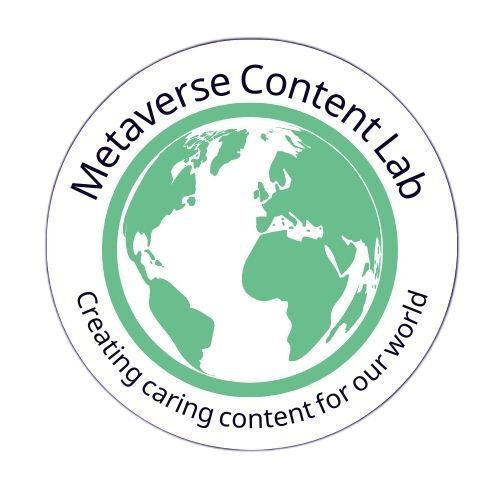Portfolio
The nature of our client work is often confidential, meaning that most of our content writing and copywriting projects can't be shared publicly.
Here you'll find a small taste of some of the work we have produced. If you'd like to learn more about the content niches we cover and what we can do for you, get in touch.

A Closer Look At Toxic TikTok Trends & Tan Dysmorphia
A Closer Look At Toxic TikTok Trends & Tan Dysmorphia
Lifestyle Collective, September 4, 2023
By Iolee Anagnostopoulou
As someone Greek who moved to the UK and, later, Ireland, I couldn’t help but scratch my head with the locals’ peculiar tanning obsession. Having grown up under the Mediterranean sun, I know first-hand what an actual tan looks like—and it certainly isn’t that unnatural orange hue that seems to be all the rage here. This, I came to realise, was the product of a long-standing fixation on tanning that’s taken over the world, further fueled by toxic social media trends.
The latest wave in this realm is a filter that swept through TikTok, promising to be the remedy for “tan dysmorphia” or “tanorexia” — the distorted perception individuals have of their skin tone, making them addicted to skin-darkening practices.
People in these videos start as ghostly pale figures under the filter, only to be revealed in their true, heavily-bronzed skin seconds later. The idea is that the person would realise they’re tanned enough compared to the dreaded pale tone. While there’s no official confirmation that the filter was designed with this intent, a trend quickly emerged.
Young girls, in particular, began using the filter to feel better about their tans and potentially ward off the desire to go darker. Although the original filter has been pulled from the app, the videos showcasing its effects remain, and countless similar filters like Ratu and Cotton continue to thrive on the platform.
Like with most TikTok trends, my initial reaction was a reflective eye-roll. But upon delving a bit deeper, I found myself swaying between compassion, scepticism, and genuine intrigue. I feel for these young girls who experience dysphoria over their tans, but I’m also puzzled by the concept of “tan dysmorphia” itself. And then, of course, there’s the controversial status of tanning to begin with.
Tanning Is Bad, Period
The act of tanning presents a slew of health risks that these videos seem to overlook. The Skin Cancer Foundation unequivocally states, “It’s a fact: There is no such thing as a safe or healthy tan.” Tanning, whether via sunlight or artificial means, damages your skin cells and speeds up the ageing process. Moreover, it drastically increases the risk of skin cancers such as basal cell carcinoma, squamous cell carcinoma, and the potentially lethal melanoma.
The statistics are staggering, with skin cancer being the most prevalent form of cancer globally. In fact, just five or more sunburns double the risk of melanoma, and around 90% of non-melanoma skin cancers can be linked to UV radiation exposure. Indoor tanning beds, the popular alternative, are even more dangerous, elevating the risk of skin cancer by an alarming 75% for those under 30.
Regrettably, the allure of a tan still holds strong sway over many, despite the well-documented risks to our physical and mental health. Skin experts often highlight that tanning can erode body image for some. Western society’s glorification of tanned skin perpetuates the pressure to attain a particular complexion, potentially resulting in dissatisfaction and negative body image, which can be detrimental to self-esteem.
Even self-tanning creams and lotions, though safer alternatives, can be taken to an extreme, feeding into the ongoing issues around body image and self-worth. This is particularly unsettling when viewed in the light of persistent colourism and racism directed at individuals with naturally darker skin tones.
But What About Tan Dysmorphia?
While the term “tan dysmorphia” doesn’t sit entirely right with experts, there’s a consensus that the compulsion to darken one’s skin might be linked to body dysmorphic disorder (BDD). In 2006, Dr Katharine Phillips found that individuals with BDD often engaged in skin-darkening practices to alleviate perceived appearance defects like pale skin.
The surge of social media has since exacerbated these body-image issues by enabling constant comparisons with idealised personas and fostering a sense of being constantly on display. Worse still, such preoccupations can lead to alienation and hinder genuine social connections, resulting in a poorer mental health state overall.
Yet, I feel that the mockery and dismissive reactions to such toxic videos don’t capture the gravity of the matter. Tanning dysmorphia may not be officially recognised, but the impact of societal beauty standards on countless individuals is genuine. And so is the murky territory of cultural insensitivity or appropriation, where Blackfishing recently sparked an uproar.
This leads us to the question: Where do we draw the line between self-expression and harmful behaviours? And isn’t it time to address these issues beyond mere comments and hashtags?
In a world that constantly demands conformity, set yourself free from ever-changing beauty standards. Remember that true beauty lies in embracing your individuality, regardless of shade. After all, a healthy relationship with your appearance should stem from self-acceptance, not a white filter or an orange hue.
My advice? Love the skin you’re in.

Talk to us
Drop us a line if you have any questions or want to enquire about our content marketing & SEO content writing services! We'll be happy to chat and explore ways to help elevate your brand.
© Copyright 2023 Metaverse Content Lab


